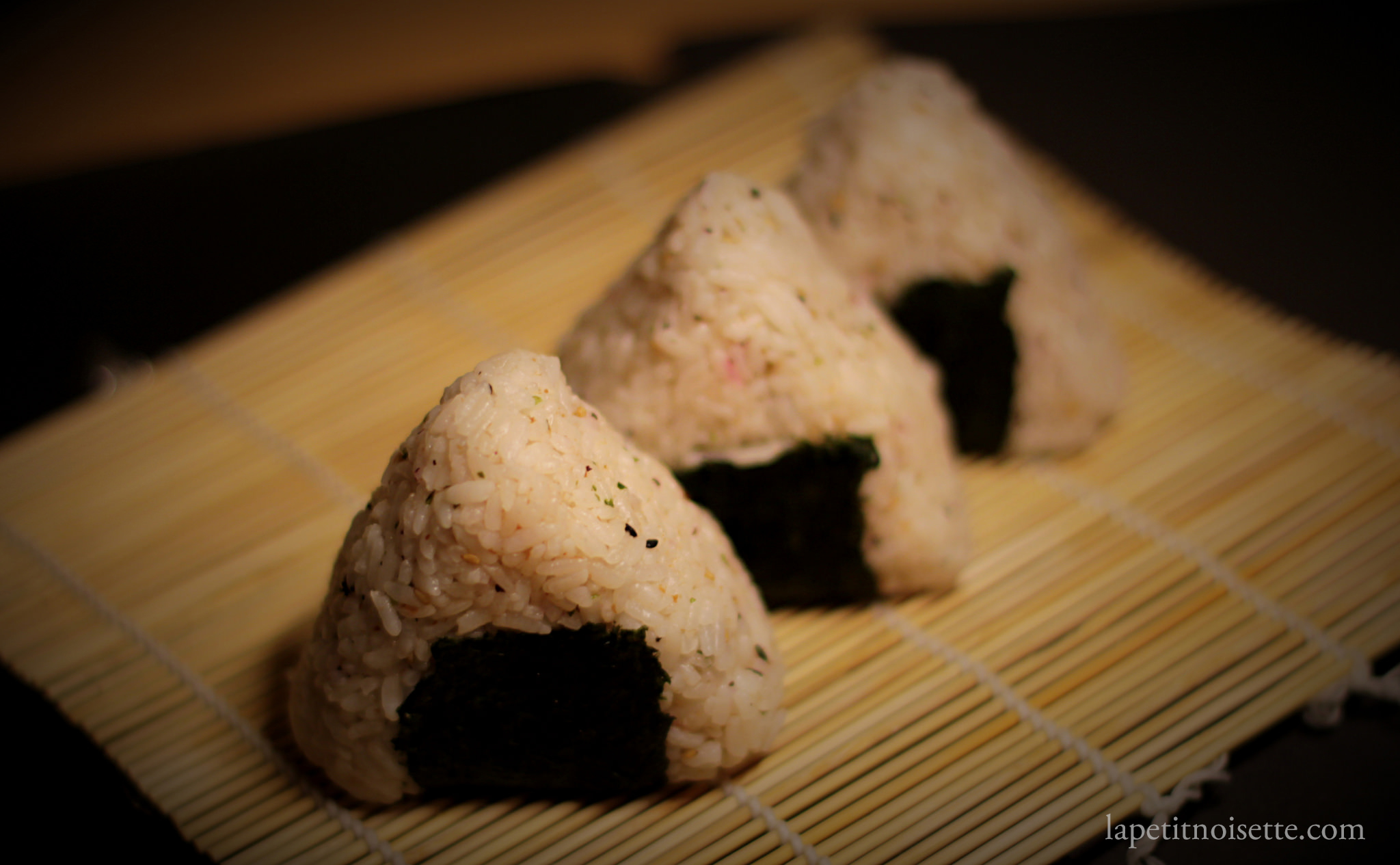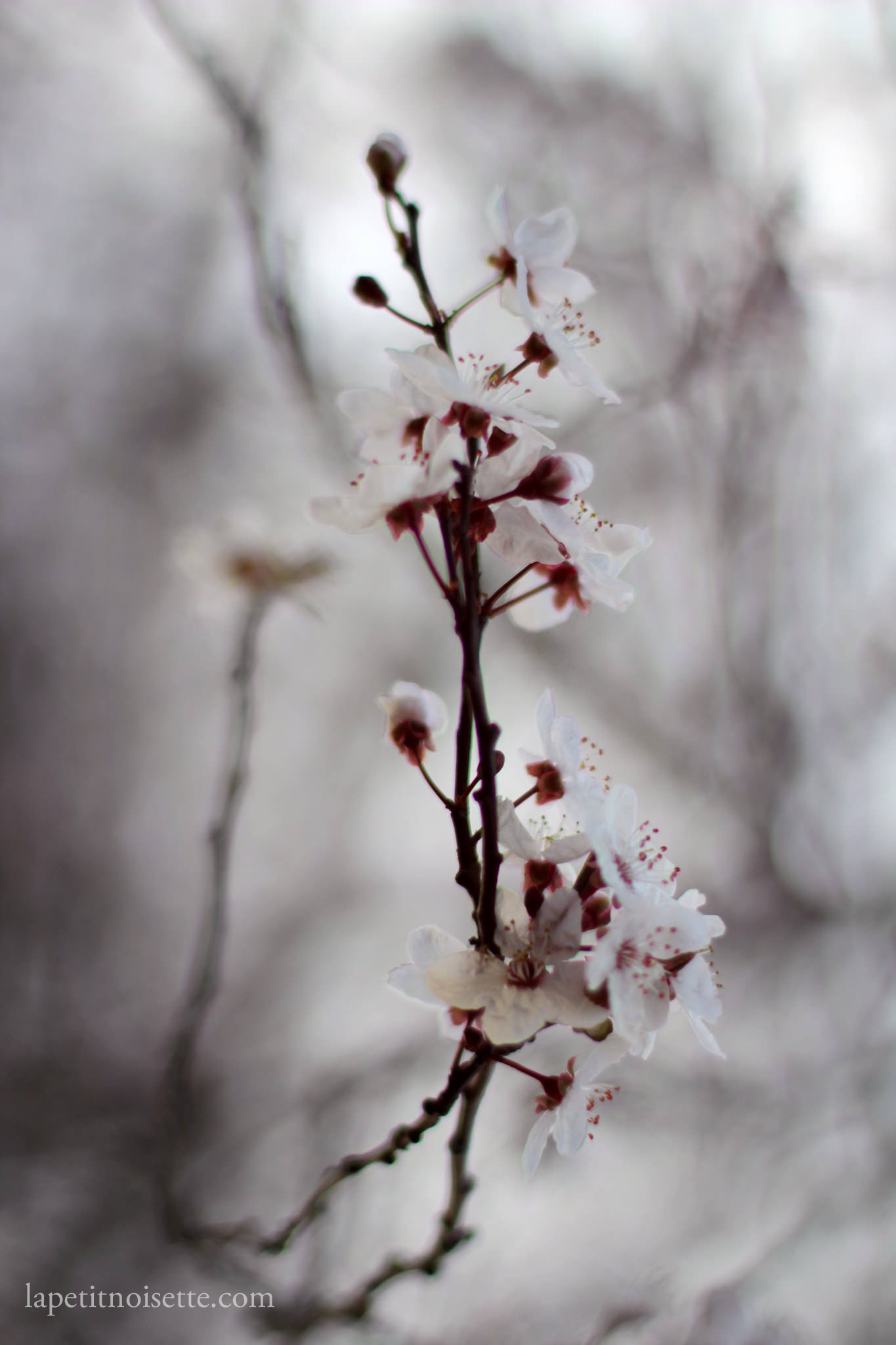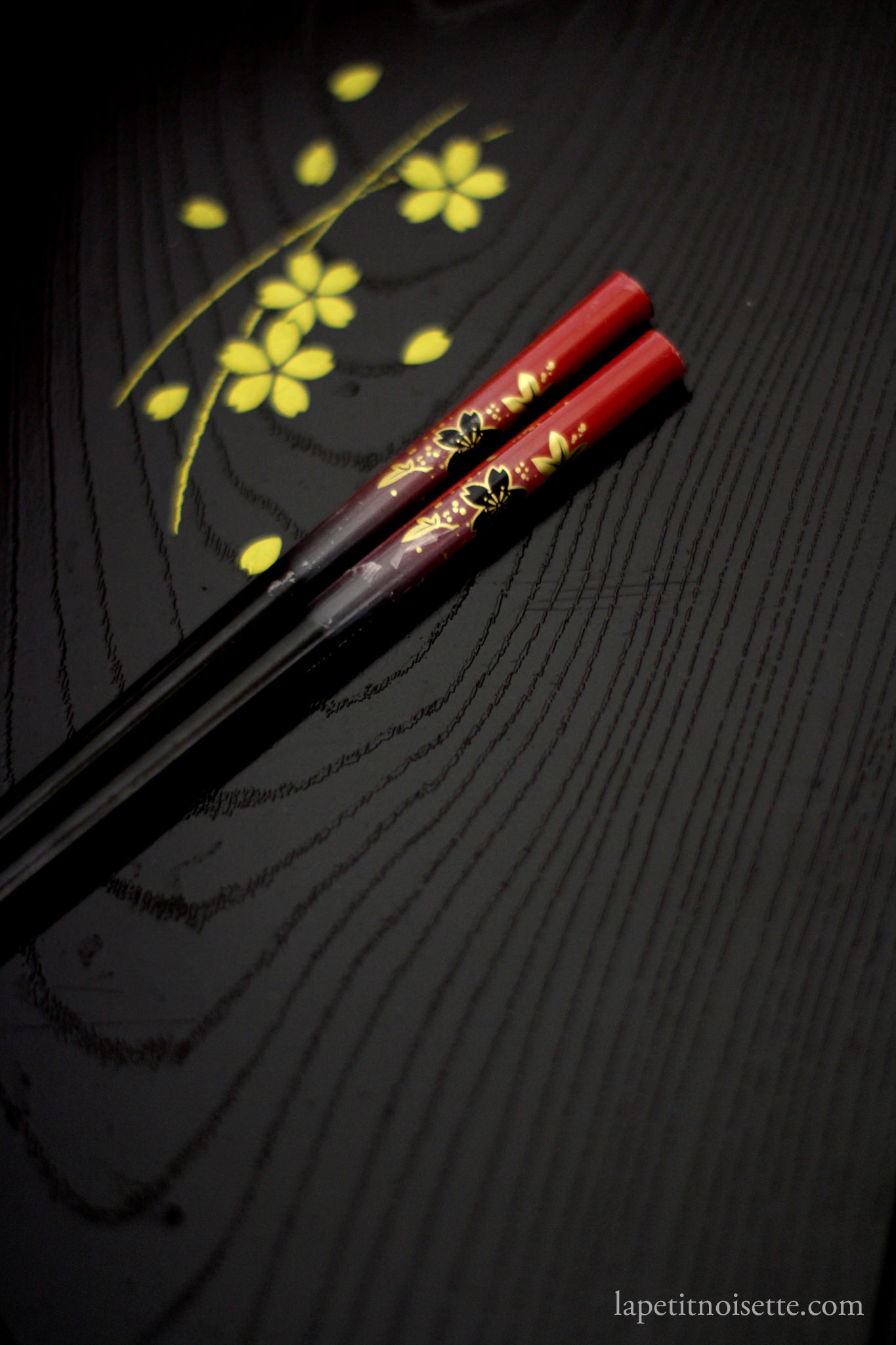Umeboshi Onigiriうめぼしおにぎり

Onigiri, the Japanese equivalent of the sandwich, consist of balls of rice stuffed with tasty fillings, wrapped with a crispy piece of nori seaweed. They are extremely popular snacks in Japan and can be brought from almost every convenience store. Other than store brought Onigiri, it is also very easy to make it at home, with mothers making their children different types Onigiri for school lunches. Onigiri comes in different shapes and flavors, with the most common shapes being either triangular or spherical. Examples of classic filling for them are tuna and mayonnaise, spicy cod roe and chicken karraige but really anything goes into them, particularly left overs from the day before.
Contrary to what most people believe, Onigiri is not a type of sushi, as it is neither seasoning with rice vinegar, nor does it use short grain rice. The most traditional Onigiri is only seasoned with salt and shaped with hands dipped in salt water. In Korea, an identical dish exists called Samgak-gimbap (삼각김밥) is also eaten as a snack or portable meal with the main difference being the filling, which instead is korean themed.
Here we will be making Umeboshi flavored Onigiri. Umeboshi is a japanese special made by pickling a particular species of plum know as the Japanese apricot or Prunus mume. This fruit is more closely related to the apricot than the plum despite being called a plum in english and is usually harvested early in the summer, around June, before they have ripened and are still a vibrant green color. Traditional Umeboshi Onigiri is made by wrapping rice around some Umeboshi, in my take on the recipe, I have decided to mix the Umeboshi paste into the rice to get a more uniform taste throughout the Onigiri, giving me the option to pair other fillings with the sour taste with the Umeboshi.
 Besides being the Japanese national flower, one of Japan’s most celebrated symbol is the cherry blossom, also known as sakura. The cherry blossom however, is not the name of one singular species of tree, but any tree species under the genus Prunus. This genus includes the apricot, almond, peach and of course cherry trees. As such, the tree of the Japanese apricot flowers during the start of spring and is celebrated as an indication of the arrival of a new season. Another traditional Japanese belief is that the Japanese apricot wards off evil and misfortune when eaten for breakfast.
Besides being the Japanese national flower, one of Japan’s most celebrated symbol is the cherry blossom, also known as sakura. The cherry blossom however, is not the name of one singular species of tree, but any tree species under the genus Prunus. This genus includes the apricot, almond, peach and of course cherry trees. As such, the tree of the Japanese apricot flowers during the start of spring and is celebrated as an indication of the arrival of a new season. Another traditional Japanese belief is that the Japanese apricot wards off evil and misfortune when eaten for breakfast.
A Japanese specialty, the first step to making Umeboshi is by pickling Japanese Apricots in coarse salt along with purple shiso leaves. The flavonoid pigment compounds are extracted from shiso leaves due to the salt and color the Umeboshi, giving them their characteristic reddish-purple color while also imparting the taste of shiso in the Umeboshi. As the name is self-explanatory, boshi means ‘to dry’, and thus the Umeboshi is finished being dried in the sun.
To prepare the Umeboshi for the Onigiri, I usually buy whole Umeboshi and grind it up using a Suribachi and Surikogi. The Suribashi is a Japanese mortar but unlike the traditional heavy stone mortar, the a Suribashi is made from pottery that is glazed on the outside. The unique feature of a Suribachi is that the inside of it is lined with many grooves that makes it an efficient surface to grind food into very fine pieces. A Surikogi on the other hand, is the Japanese version of the pestle, which is made from wood. With the Surikogi being made from wood and the Suribachi being made from pottery, this mortar and pestle is not used to grind up ingredients in the conventional pounding motion, but in a circular movement, where the Umeboshi is ground against the grooves of the Suribachi.

Umeboshi Onigiriうめぼしおにぎり
- Rice
- Furikake
- Salt
- Water
- Nori (Japanese Dried Seaweed)
- Whole Umeboshi
- Suribachi and Surikogi (Mortar and Pestle)
- To cook the rice, the easiest way is to use a rice cooker, adding 1.5 times the amount of water to rice in weight.
- When the rice is done, use chopsticks or the back of a spoon to mix the rice, which helps give the rice a fluffy texture. There is no need to soak the rice before hand.
- Allow the rice to cool down to room temperature before using it to form the onigiri.
- Cut the Nori into small rectangles.
- Using a small knife, remove the seed from the centre of the Umeboshi. Alternatively, you can use a cherry pitter to remove the seed.
- Place the remaining flesh in the Suribachi and use the Surikogi to grind up the Umeboshi using a circular motion.
- Add the now ground Umeboshi paste into the rice and mix together evenly. Add a little Umeboshi at a time and taste frequently until the rice is seasoned to your taste.
- Next, dissolve some salt into a bowl of water. Dip your hands in the water before shaping the Onigiri to prevent the rice from sticking your hands. The salt in the water helps flavour the Onigiri as well.
- Carefully take a handful of rice in one hand and first shape them into a ball. At this point, you can wrap the cut nori around the spherical Onigiri or shape the Onigiri into a triangle before adding the nori. To do that, shape one hand into a U-shape, with your fingers forming one side of the U and your palm forming the other.
- Using the other hand’s middle and index finger, form an inverted V shape and press on top of the U-shape formed by the other hand, carefully molding the Onigiri to a triangular shape. Be careful to use just the right amount of pressure of that the Onigiri holds its shape. if too much pressure is used, the rice grains will be crushed and go mushy.

Once you have shaped the Onigiri, sprinkle on some furikake on them. Alternatively, it would also have been possible to add the furikake directly onto the rice mixture. Furikake is a type of japanese seasoning that contains tiny pieces of shredded seaweed, sesame seeds, dried Katsuoboshi, and sometimes freeze-dried egg or fish roe. Japanese people sometimes just eat Furikake on plain rice but it works very well with Onigiri.
Once done, enjoy the Onigiri right away or wrap in clingfilm to enjoy later. If eating later, I highly recommend you add the nori only when you eat it, as it would go soft and lose its crispness.